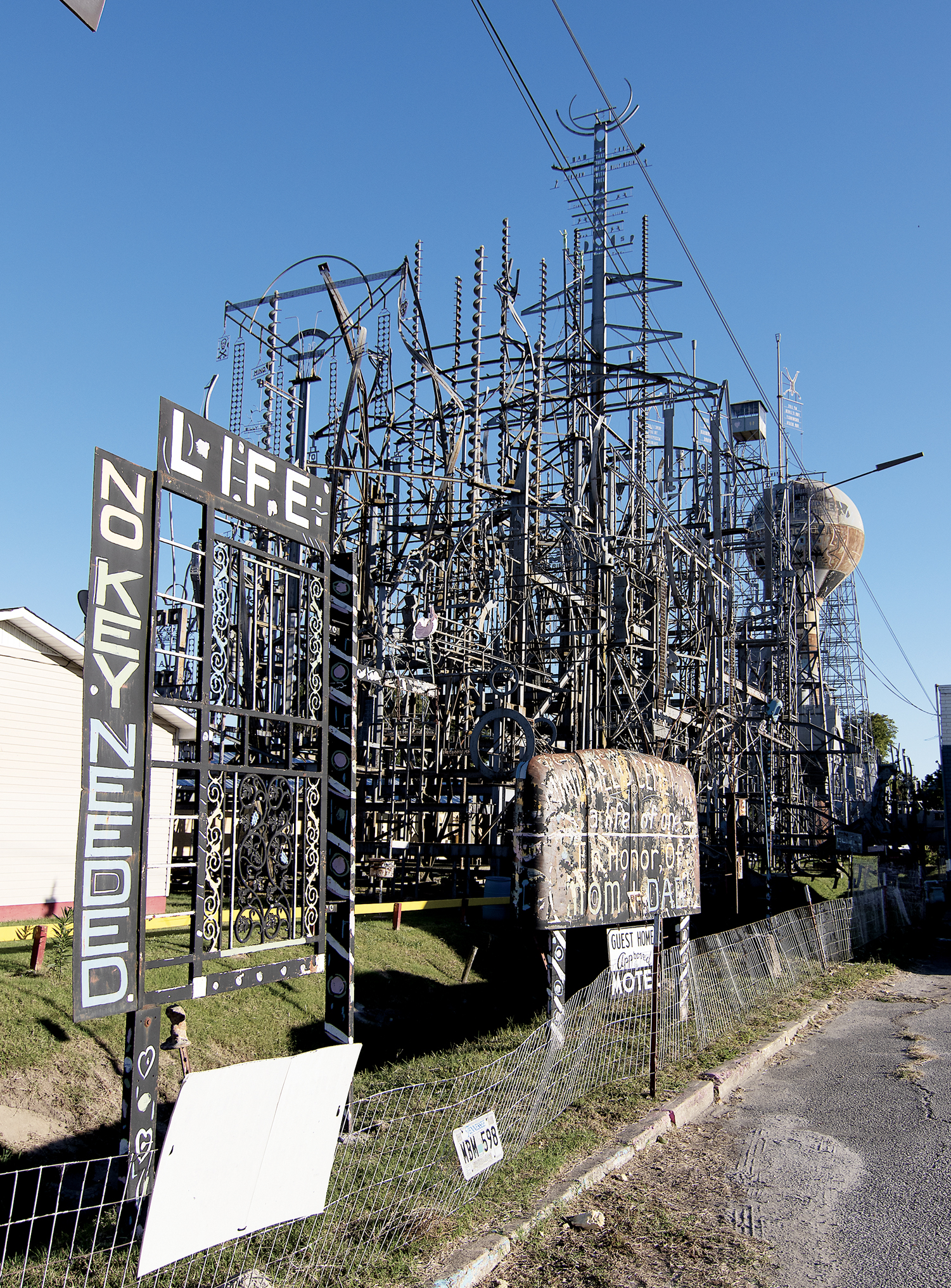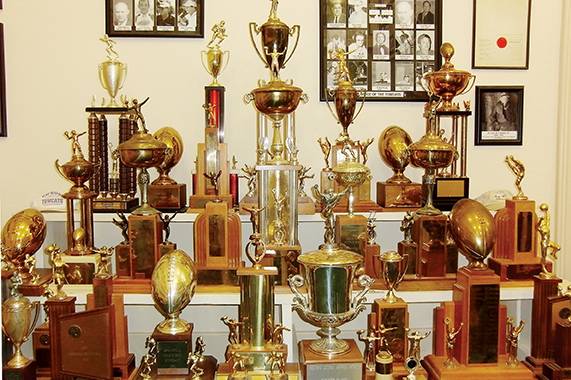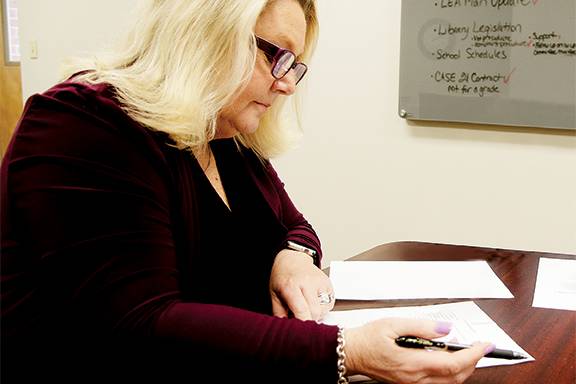The Mindfield: a life in steel

Billy Tripp’s metal marvel Mindfield in Brownsville, Tenn., feels like a series of conjunctions. Every object welded to its 125-foot steel structure has been strategically placed to be a connector to everything the artist has seen and known in his 67 years.
Late summer sun filters through the looming structure, and passing puffball clouds enhance the magic, as the welder/sculpture/author leads the way on a tour of his thoughts about life. The last hungry mosquitos of the year are eager to join the humans wandering through the sacred space where mind, spirit and sculpture intersect.
And, and…. Billy uses the repeating conjunction in the structure to stammer out how hard it was to begin.
A unique sort of philosophy threads the linear spaces of The Mindfield…Billy Tripp’s take on the world in words and steel. He pushes against any mention of inspiration (a “hoity toity word”). What others might see as creative genius, he calls work, downplaying any suggestion that the engineering, the sheer physicality and scale of the sculpture is exceptional. Instead, he’s fascinated with the challenges that others appear to manage—parenthood, for example, and playing the piano–as effortlessly as he raises steel by the ton.
“Meaningful engagement is what life’s about. I centered it on this…and my writing.”
The sculpture that reaches for the sky includes a bathtub, three fire towers, a large water tower (Deena) and a smaller water tower (from the Haywood County Farm), two boats, metal family chairs, his bachelor twin bed, a cotton seed house, a refuse burner from a sawmill (dubbed the Terminus Temple), and a concrete mixer. Among the giant’s most interesting objets d’art is the canoe…but you should ask him how it got there. The objects are more than their histories. In Tripp’s chronology in steel, they represent participants in the themes of Church, Cemetery and Ship.
Since 1989, a life’s work in metal has been rising above Brownsville. A local curiosity at first, it is now a source of pride and the recipient of national attention in numerous publications. An Internet search gives evidence of the intense interest in The Mindfield from historians, artists and writers. Billy’s words have been studied in college classes. His Mindfield sculpture is in line to be among the many art projects managed and curated by the Kohler Foundation.
Kohler will assure that the towering structure will be preserved and in perfect condition before making a contractual agreement with stipulations that the organization must maintain and care for the work to museum or environmental art standards and make it available to the public.
There is no explosive ordinance in Tripp’s Mindfield, but there are a series of revelations within a magnum opus shot through with philosophical and existential reveries about life and death and Tripp’s navigation around the tripwires of his own personal minefield.
The relentless height and verticality of The Mindfield finds its center in Billy’s favorite spot, his father’s grave marker, also the place where he wants his ashes placed after his death. If there is music here, it is the song of a father and son’s love for each other, and the rich recording of a mother’s whispered lullaby and two brothers who figure in the family circle and weave throughout The Mindfield Notes.
Though he grew up with a pastor father, Billy’s independent mind still seeks answers…but, because it’s clear he was around the King James version of the Bible, his language reflects his childhood spent in church. Surrounding the family markers are these words: “Oh, take these hands and hearts of us three boys and Mom with thee.”
Billy opened his novel with the word, “Begin.” He also ended with it. He speaks to his dad in his journal, voice breaking when he reads a passage of a letter to the father who died and took a part of his son with him. “To begin my life without him….”
The sculptural story is supplemented by the written record outlined in Tripp’s multi-volume story and notes, “The Mindfield Years,” volumes 1, 3 and 4, where he has written the notes from his daily journal.
“My work is tied up so claustrophobically with my life.”
When will the Mindfield be complete? Never. Billy will work on it until he decides it’s time to stop. Then it will be up to the Kohler Foundation to keep it for the future. As Billy has written in steel, “I be done.”
Billy Tripp’s Mindfield, on West Main Street in Brownsville very close to the town square, is dense with meaning. Though it attracts hundreds of visitors yearly, it’s not exactly a tourist destination. Getting close to it isn’t easy, and there’s no visitor’s center yet to explain the many symbols within it. It is, however, a source of pride and awe for the town, even for those head-scratching locals who drive beneath its towers and twisted metal beams daily. We don’t have to understand, we only get to walk through the remarkable mind of Billy Tripp.





